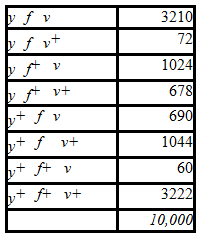An experimental approach in which scientists make observations about the natural world, develop tentative
explanations about what they observe, and then test those explanations by collecting more information, is referred to as
____.
a. science
b. the biological method
c. education
d. the scientific method
e. biology
d
You might also like to view...
Use the following information to answer the following question(s): You wake up one morning feeling slightly under the weather. A close family member enthusiastically suggests that you take some Echinacea, an herb commonly used as a cold remedy. You then decide to design an experiment to test Echinacea and see if this claim is true. You think, "If taken at the beginning of a cold, Echinacea will reduce cold symptoms."Your statement, "If taken at the beginning of a cold, Echinacea will reduce cold symptoms," is called a(n) ________.
A. observation B. theory C. conclusion D. hypothesis
A homologous chromosome pair is best described as two chromosomes having
a. the same genes in the same order but possibly having different alleles of those genes. b. the same alleles of the same genes in the same order. c. different genes in the same order and possibly having different alleles of some genes. d. different alleles of the same genes arranged in a different order. e. an identical DNA sequence.
What is the coefficient of coincidence in this region?
In Drosophila, the genes y, f, and v are all X-linked. Females who are homozygous for recessive alleles of all three genes (y f v / y f v) are crossed to wild-type males. The resulting trihybrid F1 females are testcrossed. The F2 are distributed as follows:

A) 0
B) 0.2
C) 0.4
D) 0.6
E) 0.8
Passive ways of crossing a plasma membrane
What will be an ideal response?